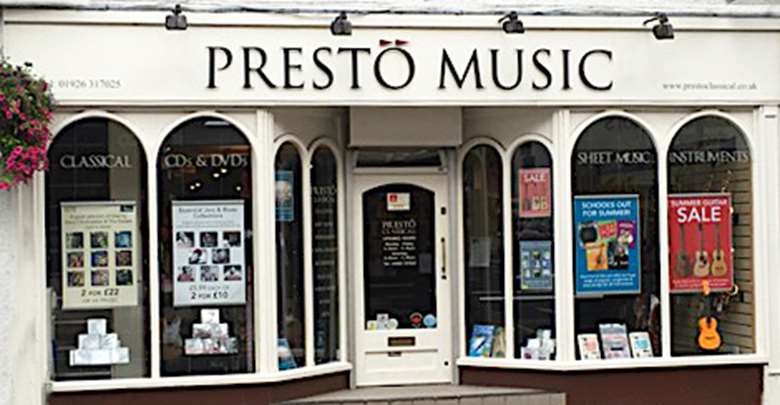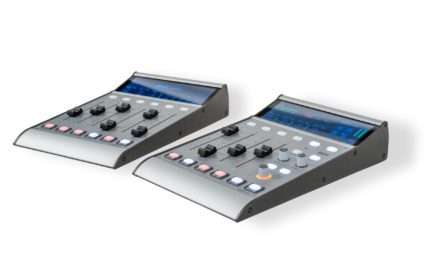Jul 7, 2021 | AUDIO, Audio News | 0 |
by Chris O’Reilly, CEO of Presto Music
The way that we discover and listen to music has evolved rapidly over the years: from vinyl to
cassettes, to CDs, Mp3 players and now finally to online streaming services. We are currently deep
into the digital music era, which has presented music lovers with abundant opportunities to listen to a
plethora of tracks and musical genres at any time, via widely available streaming services, for a small
monthly price.
Today, listeners not only have multiple streaming services to choose from, they can even curate their
own playlists according to their personal tastes and interests at the click of a button. However, there is
still a trade-off to be made. When subscribing to a new platform, the one question that individuals
need to ask themselves is: what’s more important, quality or quantity?
Streaming: a winning blend of open access and limitless choice
Chris O’Reilly
We live in an age where streaming is the dominant form of distribution and we’ve become
accustomed to being able to choose from large volumes of content. As a result, it’s very easy to take
for granted the profound impact that this type of service has had not just on consumer trends and
behaviours, but also on the music industry.
Setting aside the most obvious benefits of the technology (such as the fact that distributing music
online is more straightforward and requires fewer resources than distributing physical products),
music streaming fundamentally makes music more accessible to everyone, anywhere in the world.
Whereas once the only way to listen to music was to physically browse through our finite record
collections before playing our CDs, vinyls and cassette tapes on our player of choice (some of which
could be rather unwieldy!), today we’re able to access a seemingly limitless amount of playlists from a
device in the palm of our hand.
But it would be a mistake to assume that the streaming boom has exclusively benefited customers.
Having access to such a vast array of musical content means that it is now easier for users to
discover more leftfield artists and musical genres that they most likely wouldn’t have come across in
the pre-streaming era. Furthermore, unknown artists are able to increase their profiles whenever their
tracks are shared on social media. In short, music streaming platforms are not just about finding new
music, it’s also an opportunity to be found.
Why the acoustic experience matters
There’s no denying that streaming has taken convenience to a whole new level. However, while most
casual listeners would prefer being able to have direct access to limitless tracks and genres over
sound quality, there is a contingent of music aficionados to whom the audio experience matters a
great deal more. And when it comes to sound, streaming is not necessarily a guarantee of quality.
Audio files can take up a lot of space, which is why they need to be compressed to be able to be
stored in millions on a digital platform. Most streaming services use audio compression so that their
content will stream better, but the audio will be compromised to an extent. The average consumer
may not pick up on the subtleties, but more ardent listeners are able to appreciate that different
compression formats will affect audio quality.
This has often led digital audio to be criticized for lacking the warmth and intimacy of analogue
systems, especially vinyl. Connoisseurs enjoy vinyl for the experience and to an extent, it represents a
physical connection to music. Some listeners just take pleasure in the ritual of dusting off a record,
lining it up, putting the needle into place, before sitting back to take in the music. It’s a meticulous
listening process and a medium that encourages the consumption of a complete album. When viewed
through this lens, it becomes instantly more understandable how swiping across a screen and tapping
on icons just doesn’t compare.
Best of both worlds
At this point, it is worth noting that format alone does not ensure quality. You could listen to an
expertly crafted vinyl record, but it wouldn’t matter if it’s played through a portable record player with
built-in speakers. By the same token, having access to uncompressed studio master FLAC files
wouldn’t mean much if the music is being played over laptop speakers, or via a Bluetooth connection.
In a similar vein, being able to instantly access music tracks with a quick search may be an instantly
appealing benefit of streaming platforms, but it’s not one used to its full potential if listeners don’t take
advantage of the vast content libraries to explore new music genres.
The best way to enjoy music is to find the right balance between quality and quantity. Streaming
platforms can prove to be effective music search engines, opening up new worlds to listeners by
introducing them to artists and genres that they would have never discovered without these services.
Once listeners have developed a taste for the music they’ve uncovered online, they would be better
placed to invest in a medium (whether it be vinyl, or even CDs and cassette tapes) that allows them to
appreciate these tracks and albums to the fullest quality that they deserve to be listened to.
Only then can listeners claim to have made that crucial rite of passage from being a casual consumer
to becoming a true music aficionado.





